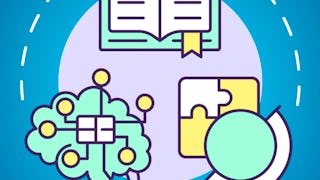This IBM course will equip you with the skills to implement, train, and evaluate generative AI models for natural language processing (NLP) using PyTorch. You will explore core NLP tasks, such as document classification, language modeling, and language translation, and gain a foundation in building small and large language models.

Saving $160 on access to 10,000+ programs is a holiday treat. Save now.


Gen AI Foundational Models for NLP & Language Understanding
This course is part of multiple programs.


Instructors: Joseph Santarcangelo
21,808 already enrolled
Included with 
(165 reviews)
Recommended experience
What you'll learn
Explain how one-hot encoding, bag-of-words, embeddings, and embedding bags transform text into numerical features for NLP models
Implement Word2Vec models using CBOW and Skip-gram architectures to generate contextual word embeddings
Develop and train neural network-based language models using statistical N-Grams and feedforward architectures
Build sequence-to-sequence models with encoder–decoder RNNs for tasks such as machine translation and sequence transformation
Skills you'll gain
Details to know

Add to your LinkedIn profile
5 assignments
See how employees at top companies are mastering in-demand skills

Build your subject-matter expertise
- Learn new concepts from industry experts
- Gain a foundational understanding of a subject or tool
- Develop job-relevant skills with hands-on projects
- Earn a shareable career certificate

There are 2 modules in this course
In this module, you will explore the foundational techniques and tools that enable machines to understand and process human language. You will learn about one-hot encoding, bag-of-words, embeddings, and embedding bags. You’ll begin by converting text into numerical features, move into document categorization using TorchText, and continue through to model training with PyTorch. The module also introduces you to language modeling using N-Gram models, both statistically and through neural networks. The hands-on labs will reinforce your learning by walking you through implementations in Python using PyTorch and related libraries.
What's included
7 videos4 readings3 assignments3 app items1 plugin
In this module, you will explore advanced neural techniques for language representation and understanding. You’ll begin by learning how Word2Vec models capture word semantics using context-based prediction. Then you’ll transition into sequence-to-sequence modeling with recurrent neural networks (RNNs) and encoder-decoder architectures, which enable tasks like translation. You’ll also investigate how to evaluate generated text using established NLP metrics and reflect on ethical concerns surrounding word embeddings. The labs will provide hands-on practice with Word2Vec integration and sequence models. In addition, the comprehensive cheat sheet and glossary will serve as quick-reference tools to reinforce your understanding of key models and concepts.
What's included
6 videos5 readings2 assignments3 app items3 plugins
Earn a career certificate
Add this credential to your LinkedIn profile, resume, or CV. Share it on social media and in your performance review.
Offered by
Explore more from Machine Learning
 Status: Free Trial
Status: Free Trial Status: Free Trial
Status: Free TrialEdureka
 Status: Free Trial
Status: Free Trial
Why people choose Coursera for their career




Learner reviews
165 reviews
- 5 stars
73.98%
- 4 stars
15.60%
- 3 stars
2.31%
- 2 stars
0.57%
- 1 star
7.51%
Showing 3 of 165
Reviewed on Mar 25, 2025
Super course,.. labs are too good to learn and challenging too.
Reviewed on Mar 6, 2025
I have enjoyed myself in this course. I can't wait to apply the skills I have learned in this class. Thank you the fantastic Team.
Reviewed on Oct 13, 2025
Overall good course but the videos could use better pacing

Open new doors with Coursera Plus
Unlimited access to 10,000+ world-class courses, hands-on projects, and job-ready certificate programs - all included in your subscription
Advance your career with an online degree
Earn a degree from world-class universities - 100% online
Join over 3,400 global companies that choose Coursera for Business
Upskill your employees to excel in the digital economy
Frequently asked questions
It will take only two weeks to complete this course if you spend four hours of study time per week.
It will be good if you have a basic knowledge of Python and a familiarity with machine learning and neural network concepts.
PS: Data set preprocessing/cleaning is not covered in this course.
This course is part of a specialization. When you complete the specialization, you will prepare yourself with the skills and confidence to take on jobs such as AI Engineer, NLP Engineer, Machine Learning Engineer, Deep Learning Engineer, and Data Scientist.
More questions
Financial aid available,


